Introduction
The city of Paris was constructed as a centre for fashion. According to Hopkins (2012), some of the best fashions that are in use in the modern society are believed to have originated from Paris, France. For a long time, the global society viewed this city as the epitome of fashion and lavishness. France was the first country to develop the fashion industry as the rich sought for lavish fashion wear in the 17th century. Those taking a vacation from the United States and Europe would prefer going to Paris for leisure and to get an opportunity of sampling some of the most recent fashion products from clothes, watches to shoes and other ornaments.
As Wilcox (2009) observes, fashion was not just represented in the clothes alone. Several structures were also built in a spectacular manner in order to meet the needs of leisure travellers. Some of the best fashion stores ad brands in the world are based in this city. The world is changing very first due to the changes brought about by the emerging technologies. Major urban centres have come up in various parts of the world, putting a threat to the prestigious position
Paris has held for a long time as the top fashion centre in the world. Cities such as Dubai have been constructed using modern technologies and now boast of the tallest building on earth. Other cities such as New York and London are also coming out to be centres of fashion in the current society. Although the city of Paris has retained its glamour and the focus on details on everything they buy, there is a general feeling that this city is losing its position as the top fashion centre in the world. In this paper, the researcher seeks to investigate if Paris still holds the top position as the centre for fashion in the world.
Discussion
According to Aindow (2010), the French were the very first people to make a successful industry out of fashion. This was in the 17th century. The country was experiencing economic prosperity due to its successful political leadership. There emerged a class of the superrich. These families included the Royal families, top businesspersons, and politicians. They had extra money to spend and wanted unique products that would help in demonstrating their class in the society.
This was not just in the clothing sector but also in the construction and other frequently used products. It is believed that the French fashions originated from Louis XIV’s court. It is believed that it was King Louis XIV who started a new trend that had never been seen before. He was going bald due to his age, but he wanted to be viewed as a young and energetic ruler. For that reason, he over-compensated the lost hair using wigs, and funny enough; the trend was picked by the Royal Court.
It then moved from the wigs to the dressing. There emerged a competition to determine who had the tallest wig, widest skirt, and beautiful shows. As Wilcox (2009) says, a new era of design was born, and it spread very quickly from this palace. For a while, the society believed that fashion was a preserve for the royalties. However, it spread to the family of politicians, businessmen, top soldiers and other wealthy residents of Paris. It became an industry in the same century as the demand for fashion products increased not only among the locals, but also visitors who came to Paris.
Paris Fashion Icons
According to Cresswell (2006), the journey taken by the French fashion icons was unprecedented. As mentioned in the section above, it is clear that the Paris fashion started in the Royal Court. Although it may be true that other people around the world could have tried to change their look for various reasons, it was King Louis who was the first prominent person to change his looks for the sole reason of the desire to look young. At that time, Cresswell (2006) says that what he did would have been viewed as madness.
Having a wig as a way of changing the look was an outrageous act, especially for a king. However, it is the manner in which he did it that caught everyone by surprise. According to Oknonkwo (2008), the wig indeed made him appear younger than he actually was. His bald head was completely concealed, and he became a little more handsome. That is why it has been believed that Louis was the very first icon when it came to the development of fashion in the city of Paris. His unique headgear was soon taken over by the aging women who wanted to conceal their grey hair. To date, wigs are widely used not just in Europe but the rest of the world. This was an invention of King Louis XIV of France.
Anne Boleyn
According to Wilcox (2009), if there is any person who publicised the French fashion designs to Europe, especially England, then it was Anne Boleyn. Having went to school in France and other parts of Europe, Anne noted that the French had a unique way of making dress. She noted that the French placed emphasis on the details, something that was not common in England. After completing her education, she returned to England where she started working in the royal palace. She soon became the Queen of England having married King Henry VIII.
There was something unique about Anne’s dressing code; she maintained the French designs in all her clothing. She would visit Paris regularly in order to buy new dresses. Her love for fashion forced the Paris dressmakers to think of something unique that befits a queen. At that moment, the dressmakers realised that they could benefit by delivering unique products for the rich, but at a given fee. The figure below is the sculpture of Anne Boleyn in one of her Paris-made dresses.
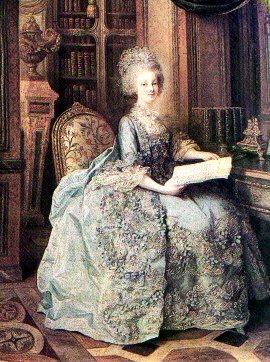
Hubert de Givenchy and Pierre Balmain
Hubert de Givenchy is one of the Paris fashion icons of the recent times that revolutionised the fashion industry, especially women dresses. In what he described as ‘New Look’, Givenchy came up with a new concept of dresses clinched waist and contrasted busts. He also came up with unique full skirts for the younger women. These fashion designs became a hit almost instantly. It spread very fast to other parts of Europe and finally to North America. The design became very popular in the United States in early 1950s (Steele 1998). Givenchy met Pierre Balman in the 1950s, and they set up their fashion shop where they sold their products.
Yves Saint Laurent
Yves is one of the prominent fashion designers who worked tirelessly to ensure that Paris gains its rightful position in the world as a fashion centre even after suffering from the Second World War. With his ready to wear fashion known in French as prêt-à-porter, Yves gave a new look to the designs made by Hubert de Givenchy and Pierre Balmain. Pierre Cardin and Paco Rabanne also made significant contributions but they were forced to remain in the shadow of Yves was managed to understand the needs of his clientele not only in Paris but also in the entire Europe and North America.
Couture Fashion Houses Started 18th Century
According to Allen, Massey and Pryke (2002), haute couture became very popular France in the 18th century. The word couture is a French word meaning dressmaking, while haute means high. The emergence of Haute couture in the French’s dressmaking industry was revolutionary. This was a period when companies emerged to focus on production of high quality products to meet the changing needs of the customers.
Although machines had become integral part of the dressmaking industry, this period saw many firms revert back to the art of sewing using hands. The clothes were sewn from very expensive materials. It took a lot of time in order to complete a single piece of dress. As Gronberg (2003) notes, it also required a lot of skills and expertise. In many cases, only the rich could afford such dresses. The figure below shows a model in a dress made through Haute couture design.
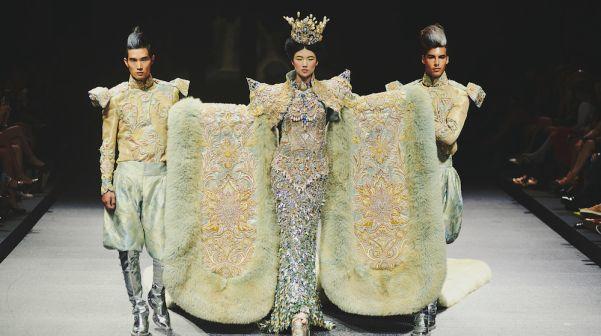
As can be seen in the picture, the material used in making such dresses was very expensive and unique. This was the era when the world turned to Paris when it came to fashion designs. These dresses were made not just to bring out the glamour, but also to pass a message or give a specific impression. As can be seen in the picture above, the dress has transformed the lady from a mere beauty to an angel. The white colour and the wings help in bringing out the image of an angel.
The crown on her head tells a different story, a story of a queen. A closer look at the details of this dress demonstrates the lavishness that these Paris designers emphasised on when making these dresses. The beads and the embroidery are unique and very expensive. It is not possible to identify edges where the material was stitched together. It seems the material was in that particular shape and that the designers only added the beads.
The images on the wings show signs of royalty that befit a queen. To believe that such a magnificent dress did not go through a machine is not easy. However, that is the fact, and it is what made Paris to be considered the centre of fashion. It is during this period that some of the best fashion houses known today were started. These fashion houses realised that the market for their products was expanding very fast, especially in North America and other parts of Europe that were experiencing massive economic growth. It is necessary to look at some of the top fashion houses that emerged during this period.
Louis Vuitton
It is almost impossible to talk about fashion without mentioning Louis Vuitton, one of the world’s leading fashion houses that has maintained its legacy despite challenges that France has gone through during the First World War and Second World War. Founded by Louis Vuitton in 1854, this firm rose to prominence due to its unique focus on the quality of products they offered. The Paris-based firm soon found out that there was a huge market outside France. It only focused on luxury products targeting the rich and part of the middle class. Some of its luxury products included ready to wear shoes, jewellery, branded watches, accessories, and sunglasses.
It also provides on-demand products for their high end customers at extra costs. Many other top French fashion houses have lost their glamorous position in the world rankings, but Louis Vuitton has defied challenges brought about by the emerging technologies. According to Hopkins (2012), Louis Vuitton was named the most valuable brand in the world in the luxury market for six consecutive years, from the year 2006 to 2012. This was a record that is yet to be broken in this industry in the modern world. This brand is getting even more expensive in the current market as the number of the rich keeps increasing.
The brand was valued at $ 25.9 billion, making it one of the most expensive brands in the world (Mancoff 2012, p. 87). It operates in various countries around the world. If the world tries to forget that Paris is the centre of fashion in the world, then Louis Vuitton will be there to remind them. The firm has some of the most expensive dresses, rings, watches, shoes, watches among others.
These products are not expensive just because of the brand, but also because of their designs, the materials used, and the manner in which they were constructed. Some of these dresses take several weeks to be sown by hand when a number of people are assigned to work on them. Some of these watches are made of pure gold or diamond and offer other important services beyond just telling time. Steele (1998) says that many people have flown to Paris to buy wedding rings because they still believe that it is the centre of fashion in the world. The figures below show some of the products offered by this firm in the market today.
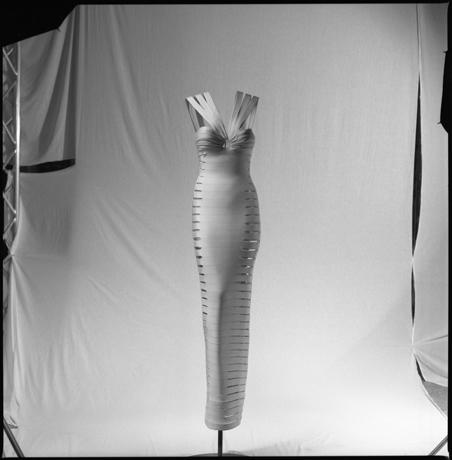
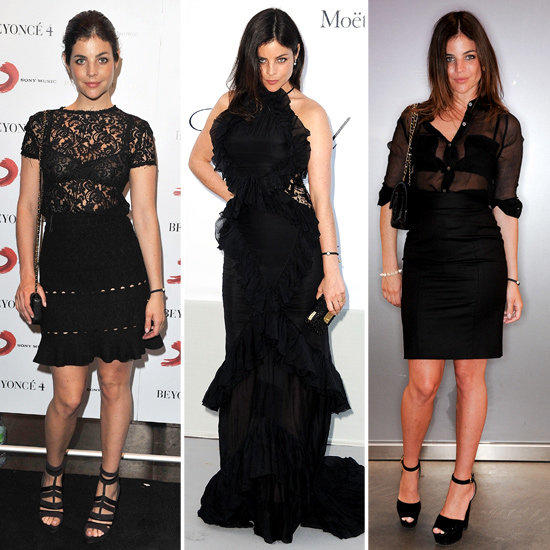
As seen in the above pictures, this fashion house pays a lot of attention to the uniqueness of their products. They are keen to provide products that meet specific needs of their customers. The materials used in making of these dresses are also unique, as shown in the white dress above. It not only provides the glamour, but also offers comfort to the wearer. Such dresses are considered revealing, while in essence, they reveal nothing (Aindow 2010, p. 134). The figures below show other fashion products offered by this firm.
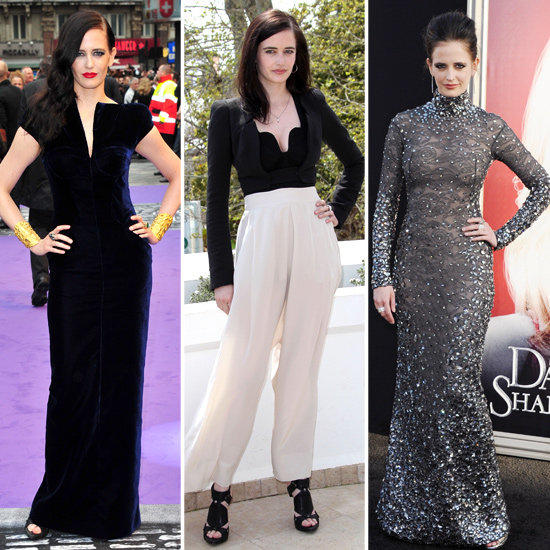
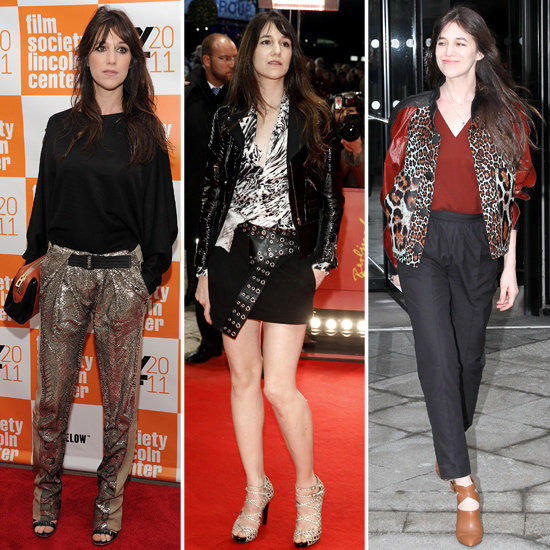
Paris also boasts of numerous other fashion houses such as Colette, Merci, Spree, and French Trotters that have remained successful over the years.
The Museums and Stores
According to Mancoff (2012), fashion in Paris goes beyond clothes and related products meant to be worn. There are many iconic buildings and museums that have made Paris to be unique and a place worth visiting by the international tourists. The museums, parks, bridges, and some roads all demonstrate artistry that is very unique. The Golden Triangle is probably one of the regions in Paris that still emphasise on the fact that this is still the centre of fashion in the world. Also known as Triangle d’Or, the Golden Triangle is the centre of luxury brands bringing together three famous shopping streets in the city of Paris (Allen, Massey & Pryke 2002, p. 73).
The three streets include George V, Champs Elysees, and Avenue Montaigne. The glamour of the shops on these streets and the unique products they offer has made the Golden Triangle popular in the world. The rich come to the place to buy engagement or wedding rings, wedding gowns, wrist watches, dresses, and a number of other products. The figure below shows one of the shops within the Golden Triangle.
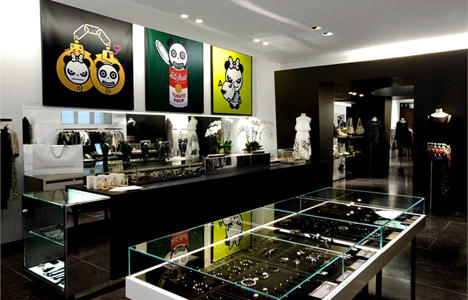
According to Oknonkwo (2008), New York, London, and even Dubai could be some of the emerging fashion centres in the world because of the modern technologies used in their construction. However, the city of Paris, especially the Golden Triangle edges them out. The name Golden Triangle was coined not just because of the way the three streets are connected, but also because of the products sold in this region. Most of the shops sell products made of pure gold and diamond. Quality of products in the three streets is not compromised, and as would be expected, the prices charged on the products’ prices are also very high. Fletcher and Tham (2014) say that in the streets of the Golden Triangle, customers get value out of their purchases.
The city of Paris also has a number of museums where historical facts are kept. In these museums, it is easy to see that path taken by the fashion icons towards what we have today in the fashion industry. One such museum is in Paris’ city hall shown in the figure below.
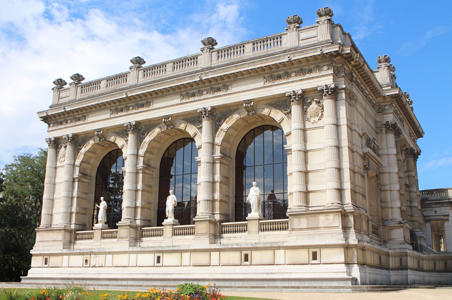
People and Styles
According to Fletcher and Tham (2014), it is true that a number of cities have rises to the level of prominence when it comes to the issue of fashion and luxury products. Cities such as New York and London have been voted as the top centres of fashion in the world for a couple of times. However, there is a general belief among the consumers of fashion products that Paris still remains the formidable centre for luxury and fashion products.
The trends taken by people when looking for fashion products and the styles they prefer emphasise this fact. Gronberg (2003) says that many people still consider going to Paris to shop for various luxurious products. The scholar further notes that one of the reasons why many people prefer Paris as their tourist destination is the luxury and fashion that the city offers. Besides taking photos at some of the iconic sites in the city, most of these visitors will make a point of buying various items as a sign that they once visited Paris. They believe that such products are trendy, precious, and unique simple because they were made in the land of luxury and fashions.
Conclusion
The city of Paris was considered the centre for fashion, and it is true that this is still the case. In almost all the rankings, the city of Paris would emerge in top three among the best centres of fashion in the world. Its Golden Triangle is the undisputed centre of luxury products in the world. Inasmuch as other cities have risen to be major centres of fashion, Paris still remains one of the most preferred fashion centres in the world.
List of References
Aindow, R 2010, Dress and Identity in British Literary Culture, Cengage, New York.
Allen, J, Massey, D & Pryke, M 2002, Unsettling Cities: Movement/settlement, Oxford University Press, Oxford.
Cresswell, P 2006, Time out Paris, John Wiley & Sons, New Jersey.
Fletcher, K & Tham, M 2014, Routledge Handbook of Sustainability and Fashion, Routledge, New York.
Gronberg, T 2003, Designs on Modernity: Exhibiting the City in 1920s Paris, Elsevier, Paris.
Hopkins, J 2012, Fashion Design: The Complete Guide, Wiley & Sons, New Jersey.
Mancoff, D 2012, Fashion in Impressionist Paris, McMillan, London.
Oknonkwo, U 2008, Luxury Fashion Branding: Trends, Tactics, Techniques, Cengage, New York.
Steele, V 1998, Paris Fashion: A Cultural History, Oxford University Press, Oxford.
Wilcox, 2009, The Golden Age of Couture: Paris and London 1947-1957, McMillan, London.